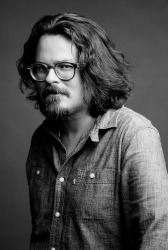Posted by Elena del Valle on January 25, 2021

Erika Benson, co-owner, Gokce Capital LLC
Photo: Gokce Capital LLC
We have a new podcast player. See the top of the page.
A podcast interview with Erika Benson, co-owner, Gokce Capital LLC, is available in the Podcast Section of Hispanic Marketing and Public Relations, HispanicMPR.com. During the podcast, she discusses how to invest in vacant land in 2021 with Elena del Valle, host of the HispanicMPR.com podcast.
Erika is a former affordable housing director for the City of New York turned full-time Land Investor. She used to help New Yorkers find affordable housing, now she helps people around the United States find affordable land.
She keeps an active blog on the company website where she gives out advice on buying and selling land. She has a YouTube channel with over 250 videos that provide tips for land buyers and information on the company properties.
To listen to the interview, scroll down and click on the play button below. You can also listen by looking for “Podcast” then select “HMPR Erika Benson” and or download the MP3 file to your iPod or MP3 player to listen on the go, in your car or at home. You can also find it on the RSS feed. To download it, click on the arrow of the recording you wish to copy and save it to disk. The podcast will remain listed in the January 2021 section of the podcast archive.
Posted by Elena del Valle on January 19, 2021

The Climate Crisis Font English language landing page – click to enlarge
Video, photos: Helsingin Sanomat
Photo Tuomas Jääskeläinen: Juha Törmälä
Helsingin Sanomat
, “the biggest subscription-based newspaper in the Nordics,” dedicated several weeks of work spread over months to the development of The Climate Crisis Font designed to visualize the urgency for climate action. The new font is available for download free of charge at TypeToAct.com. Scroll down to watch an English language video.
“The font has been licensed with SIL Open Font licensing making it available for editorial, commercial, and private use,” said Tuomas Jääskeläinen, art director, Helsingin Sanomat, in response to questions through a communications intermediary via email.” The full terms of use are available at drive.google.com/file/d/19M8ebCT0JOLWln6LDkWQzj5gy-qmj9Ww/view.

The Climate Crisis Font designed to visualize the urgency for climate action – click to enlarge
“The main limitation is that it needs to be kept freely available and free of charge,” he said. “The font is intended for anyone who wishes to make a point about the impact of climate change, be it the media, designers, artists, activists or anyone else.” He explained that “the font has been designed to work in all latin-based alphabets when it comes to e.g. diacritics.
.
When asked other than drawing attention to climate action what makes the font special or distinctive he replied: “
I think it’s the fact that it’s based on actual data. We haven’t done a massive search, but I suspect it’s among the first data-based fonts in the world, if not the first. That, and the way the scalable OpenType technology lets the font align with the yearly data, is what makes it special for me.”

Tuomas Jääskeläinen, art director, Helsingin Sanomat
Regarding the budget or budget range for the creation of the font he said: “
Unfortunately I cannot disclose the budget, but it is a reasonable investment considering the scope of work needed.”
Helsingin Sanomat, a private for profit entity, is published by Sanoma Media Finland, a leading Finnish multi-channel media company. The paper’s primary language is Finnish.
Posted by Elena del Valle on January 6, 2021

Because Internet
Photo: Riverhead Books
Ending a text with a period may make the writer seem old while an emoticon at the end of a sentence can add surprising nuance to the statement, according to a book about language published last year. The subtleties of informal written communication are many, says Gretchen McCulloch, a self described internet linguist. She believes modern digital communications are changing language and the way we and society overall communicate for the better. In Because Internet: Understanding the New Rules of Language (Riverhead Books, $26) she explains her views and theories.
Salutations like language in general evolve over time, according to the book. McCulloch explains that for many addressing someone with dear has become dated. At the same time hey, which for older generations is objectionable, has become a common written email greeting. Hi follows in popularity with hello being last and used to address strangers.
The author goes on to say that a generational gap exists; and some users embrace the “expressive capacity” of informal writing while others reject it. The author explains the difference between emoticons, emojis and gifs, pointing out that although there is no universal agreement on their appearance emojis are the best fit for many people communicating electronically. They make it possible for users to better express their mental states in written form, the author says. It’s useful to think of emojis as gestures; already courts have had to address the meaning of emojis such a raised hand, a possible gang sign or a comma, she says.
The 326-page hardcover book published in 2019 is divided into eight chapters: Informal Writing, Language and Society, Internet People, Typographical Tone of Voice, Emoji and Other Internet Gestures, How Conversations Change, Memes and Internet Culture and A New Metaphor. The emojis in the book are from Twemoji, an open source font released under a Creative Commons Attribution.
McCulloch, is based in Montreal, Canada and hosts the podcast Lingthusiasm, according to her bio.
Comments:
Filed Under: Books














